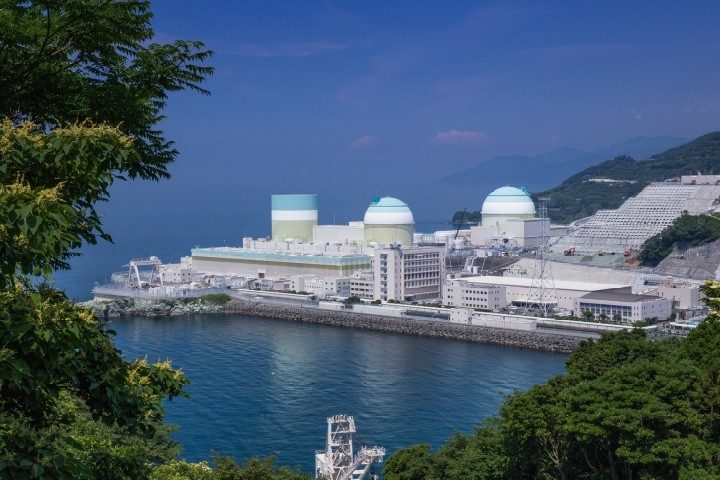
Japanese Prime Minister Fumio Kishida’s advisory panel has authorized a plan to prolong the lifespans of nuclear reactors beyond 60 years and construct new units to replace decommissioned ones, undoing existing policies following the Fukushima disaster of 2011.
This move mirrors a shift in public opinion as Japan, which depends hugely on imports, grapples with the possibility of blackouts amid the Russia-Ukraine crisis and extreme weather.
Although huge demonstrations demanding the abolition of nuclear power were a common occurrence following the 2011 incident in Fukushima, recent polls reflect increasing support for rebooting idled plants.
The government is hoping to present laws to Parliament during the next session to put the basic plan into action, Kishida told a meeting of his “green transformation” panel, which comprises mainly business executives and academics, at his official residence.
Japan is joining a global reversion to nuclear energy after the prices of natural gas and coal skyrocketed amid the Ukraine-Russia crisis this year.
The Kishida administration is also turning to nuclear power to help curb emissions to attain Japan’s 2050 net-zero target, a “green” initiative.
Japan’s bustling capital of Tokyo has — twice this year — barely avoided widespread blackouts as businesses and residents obeyed calls to setsuden, i.e, to save electricity.
Household electricity bills went up an average of 30 percent in September over lasts year, helping shift public sentiment in favor of restarting nuclear reactors.
A survey by the Yomiuri newspaper in August found 58 percent supporting the restart of idled reactors, the first time a majority was in favor of the idea in that poll series since the question was initially asked in 2017.
A separate survey by public broadcaster NHK earlier in December found 45 percent approved of the panel’s plan, while 37 percent opposed it.
A July poll by the Nikkei newspaper had found that seven in 10 respondents would back nuclear energy.
The government still faces some protests from local residents over nuclear restarts, and lawsuits linked to safety concerns still keep many reactors offline.
Only a third of Japan’s operable reactors have restarted since the 2011 disaster.
During his meeting on the topic of “green transformation” in August, Kishida announced that Japan planned to restart seven more nuclear reactors. Once these additional reactors are restarted, the number of reactors brought back online since the 2011 Fukushima crisis would reach 17 out of a total 33 operable units.
“Nuclear power and renewables are essential to proceed with a green transformation,” Kishida reasoned. “Russia’s invasion changed the global energy situation.”
These seven additional reactors are the No. 6 and No. 7 reactors at Tokyo Electric Power Company Holding’s Kashiwazaki-Kariwa plant, the No. 2 reactor at Tohoku Electric Power’s Onagawa plant, the No. 1 and No. 2 reactors at Kansai Electric Power’s Takahama plant, the No. 2 reactor at Chugoku Electric Power’s Shimane plant, and the No. 2 reactor at Japan Atomic Power’s Tokai No. 2 plant. Of these reactors, the Takahama, Onagawa, and Shimane reactors have already been granted local permission to return online. These reactors would be able to restart after the completion of safety measures.
The government also indicated its desire to spearhead grassroots efforts to garner local approval to restart the Kashiwazaki-Kariwa and Tokai reactors.
Also, Kishida encouraged policymakers to deliberate on “constructing next-generation nuclear reactors equipped with new safety mechanisms” as well as “making maximum use of existing nuclear plants.”
“Please accelerate your discussions on all possible measures, based on opinions from ruling and opposition parties as well as experts, so you can reach concrete conclusions by the end of the year,” Kishida expressed.
Dr. Ken Koyama, chief economist at the Institute of Energy Economics, told The Straits Times that nuclear power can simultaneously tackle the “3E challenges of energy security, environment protection and economic efficiency.”
Moreover, Moody’s Japan analyst Hiroe Yamamoto pointed out that nuclear assets can “generate revenue and reduce the need to procure fossil fuel generated power” at a time of sky-high fossil fuel prices.
Political scientist Mikitaka Masuyama of the National Graduate Institute for Policy Studies also indicated that Kishida would be emboldened to make a decisive move on nuclear power as a means to stabilize electricity prices.
However, observers cautioned that restarting nuclear plants and building new ones would be an inherently costly and time-consuming process.
Such a situation is made more pressing owing to the stagnation of Japan’s nuclear industry since 2011, with the Nikkei reporting that 20 companies that supply reactor parts have exited the nuclear business in the last decade.
Additionally, there are worries, including by major companies such as Mitsubishi Heavy Industries and Toshiba, over expertise.
Dr. Tetsunari Iida, who heads the Institute for Sustainable Energy Policies, said that turning to nuclear “does not take reality into consideration” and should not be relied upon for Japan to reach its 2050 carbon-neutral goals.
He said, “New construction cannot be expected from a realistic, economical, time-consuming, or business point of view.”
Renewable Energy Institute director Mika Ohbayashi chimed in, saying that nuclear plants will need to overcome roadblocks such as the overhaul of evacuation and safety plans, potential court litigation, and attaining local consensus, among others.
Japanese fishermen, for example, are worried that a plan — supported by Tokyo and the International Atomic Energy Agency — to release treated water from the crippled nuclear plant into the Pacific Ocean will undermine their livelihoods.
The water would have been treated to eradicate all harmful radioactive contaminants prior to the release, except for tritium, which is a routine byproduct of all nuclear power plants. The release, slated to start in March next year, will be conducted about one kilometer offshore through a newly constructed undersea tunnel, with the “tritiated water” diluted over 100 times with seawater to make the level of tritium below 1/40 of the legal limit.




